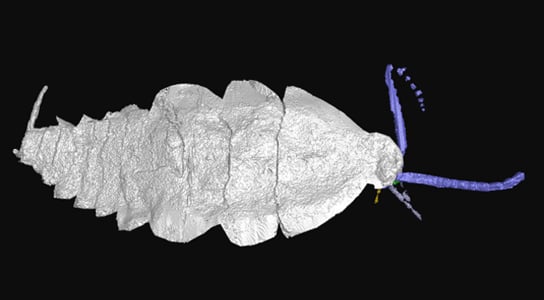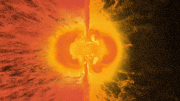
A 305-million-year-old insect from the Carboniferous Period
Two 305-million-year-old insect nymphs were scanned in high resolution in order to construct three-dimensional portraits. The two insects were scanned using fossils from the Carboniferous Period, which lasted from 359.2 Ma (million years ago) to the beginning of the Permian Period, at 299 Ma.
The researchers published their findings in the journal PLoS ONE. One of the specimens has sharp spines on its body and head, and belongs to an unknown species and genus. It’s been named Anebos phrixos, which roughly translates as ‘young and bristling’. The spines might have been an evolutionary strategy to avoid being consumed by early amphibians. The other is somewhat akin to modern-day cockroaches, but its exact classification is somewhat complicated. It had long antennae and chewing mouthparts, similar to the generalized mandibulate mouthparts of extant orthopteroid insects.
Since the specimens are juveniles, adult versions could have been significantly different, owing to changes that insects go through throughout their life cycles. The fossils were scanned using X-ray microtomography to obtain cross-sections of the fossils, which measure about 2 cm long. They were discovered at Montceau-les-Mines Lagerstätte in France.
Fossils of Carboniferous Period insects are very uncommon, and could help paleontologists better understand the evolution of insects.
Reference: “Tomographic Reconstruction of Neopterous Carboniferous Insect Nymphs” by Russell Garwood, Andrew Ross, Daniel Sotty, Dominique Chabard, Sylvain Charbonnier, Mark Sutton, Philip J. Withers, 25 September 2012, PLoS ONE.
DOI: 10.1371/journal.pone.0045779









Amazing detail!